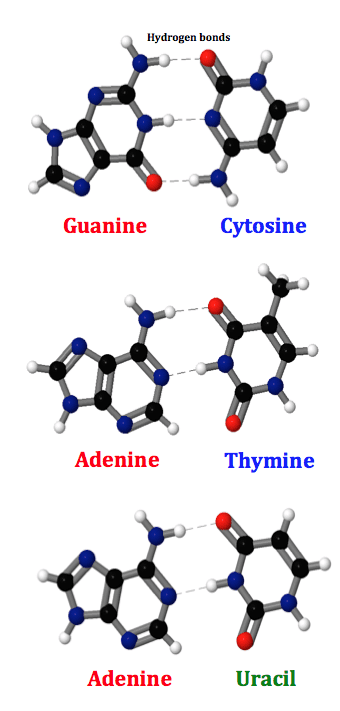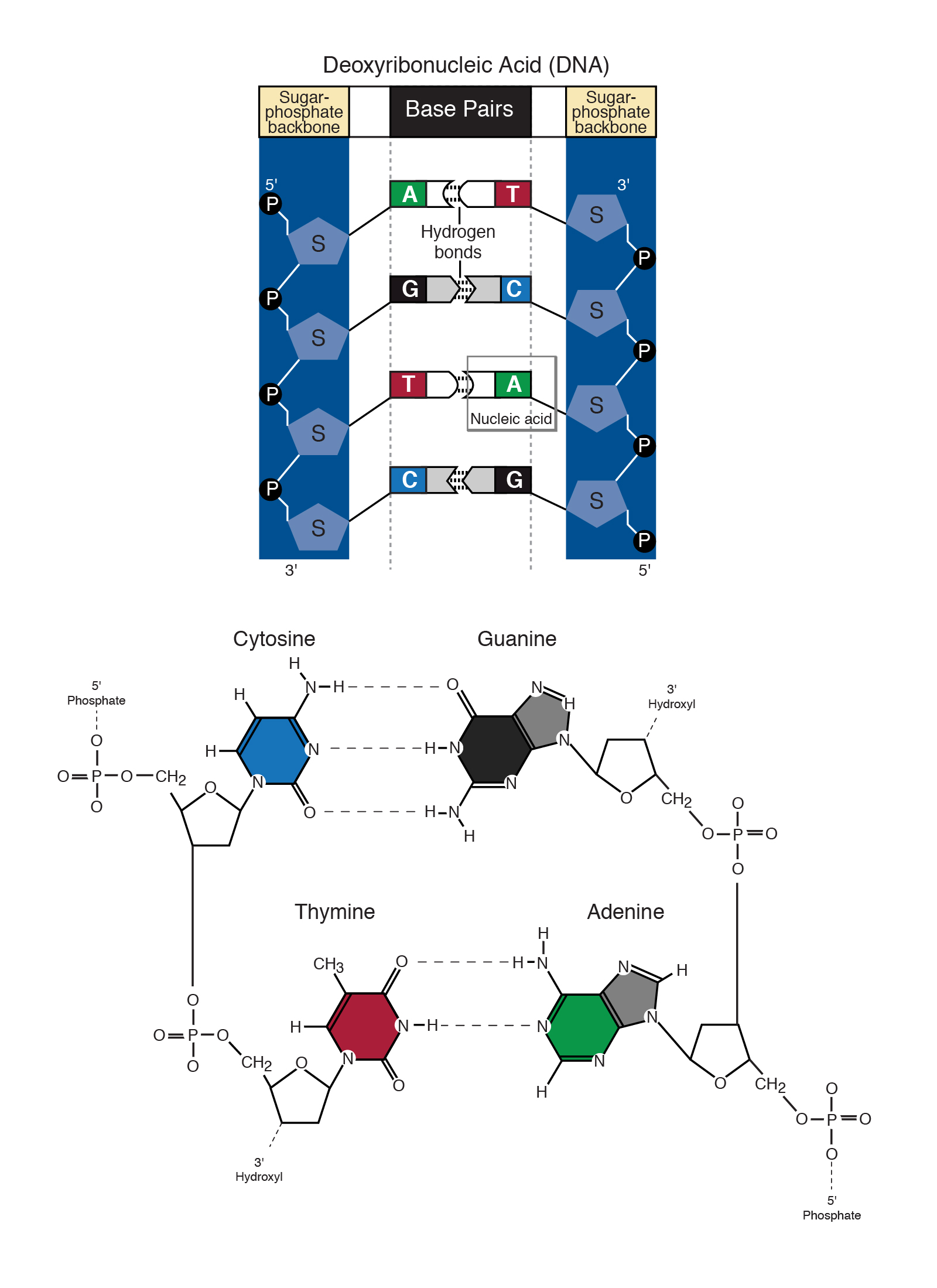The A-T pair forms two hydrogen bonds. Within the DNA molecule thymine bases located on one strand form chemical bonds with adenine bases on the opposite strand.

Adenine Thymine Base Pair Joined By Two Oppositely Oriented Hydrogen Download Scientific Diagram
B wider than the left.

. Under normal circumstances the nitrogen-containing bases adenine A and thymine T pair together and cytosine C and guanine G pair together. The sequence of four DNA bases encodes the cells genetic instructions. D shorter than the left.
Guanine and cytosine are bonded together by three hydrogen bonds. February 22 2022. A longer than the left.
The paired nitrogen bases are held together with hydrogen. The pyrimidine thymine T C with G. Thymine and Adenine are a complementary base pair that forms 2 hydrogen bonds.
The four nitrogenous bases of DNA are thymine adenine guanine and cytosine. The rules of base pairing or nucleotide pairing are. Bases pair off together in a double helix structure these pairs being A and T and C and G.
The DNA molecule consists of two strands that wind around each other like a twisted ladder. C of same size as the left. According to Watson-Crick base-pairing which forms the basis for the helical configuration of double-stranded DNA DNA contains four bases.
The rule of Chargaff also known as the complementary base pairing rule notes that pairs of DNA base pairs are like purine with pyrimidine and vice versa. The purine adenine A always pairs with. Which of the following forms a base pair with thymine.
Guanine and cytosine are bound together by three hydrogen bonds. A single nitrogen-containing six atom ring is made to form these bases. E Thymine and Guanine are a complementary base pair that forms 2 hydrogen bonds.
Mario62 17 1 year ago. GO2 16 The two strands of the double helix of DNA are held together by A hydrogen bonds. DNA molecule id made up of two type of nitrogen bases purine and pyrimidine.
The pyrimidine cytosine C always pairs with. Which statement does not describe an organism that reproduces asexually. The binding of these base pairs forms the structure of DNA.
D shorter than the left. Attached to each sugar is one of four basesadenine A cytosine C guanine G or thymine T. C of same size as the left.
Whereas adenine and thymine are bound together by two hydrogen bonds. A base pair is two chemical bases bonded to one another forming a rung of the DNA ladder. Which of the following cannot be found in a nucleotide of RNA.
Thymine T is one of four chemical bases in DNA the other three being adenine A cytosine C and guanine G. The four nitrogenous bases of DNA are thymine adenine guanine and cytosine. Thymine and Guanine are a complementary base pair that forms 2 hydrogen bonds.
This is known as complementary base pairing. Now let us find the solution from the options-. The specific pairing patterns of the bases is determined by the hydrogen bonds they can make.
You might be interested in. B wider than the left. D Thymine and Adenine are a complementary base pair that forms 2 hydrogen bonds.
The two purines adenine A and guanine G and the two pyrimidines cytosine C and thymine T. See also what does impact mean in social studies. Cytosine and Thymine are a complementary base pair that forms 3 hydrogen bonds.
Answer Explanation Answer. Adenine pairs with Thymine forming 2 hydrogen bonds. A base pair is one of the pairs A-T or C-G.
The base-pairing rule states that in DNA adenine pairs with thymine and guanine pairs with cytosine and in RNA adenine pairs with uracil. In a DNA molecule which of the following forms a base pair with thymine. What are the four complementary base pairs.
Under normal circumstances the nitrogen-containing bases adenine A and thymine T pair together and cytosine C and guanine G pair together. Examples of pyrimidine bases are thymine and cytosine. Adenine goes with Thymine and Cytosine goes with Guanine Send.
The binding of these base pairs forms the structure of DNA. The four bases that make up this code are adenine A thymine T guanine G and cytosine C. RNA doesnt contain thymine bases replacing them with uracil bases U which pair to adenine1.
The purine guanine G. In a DNA molecule Which of the following forms a base pair with adenine. A longer than the left.
Cytosine This is on apex by the way. Cytosine and Thymine C T are examples of a pyrimidine which is composed of a single six atom ring and adenine and guanine AG are the examples of purine. Whereas adenine and thymine are bonded together by two hydrogen bonds.
This is known as complementary base pairing. A longer than the left. What base does thymine pair with.
A guanine forms a base pair with _____. The rule of base pairing states that for every 1 thymine there is 1 adenine in DNA During DNA replication a DNA strand that has the bases CTAGGT produces a strand with the bases.

Complementary Base Pairs Adenine Thymine At And Guanine Cytosine Gc Download Scientific Diagram

0 Comments